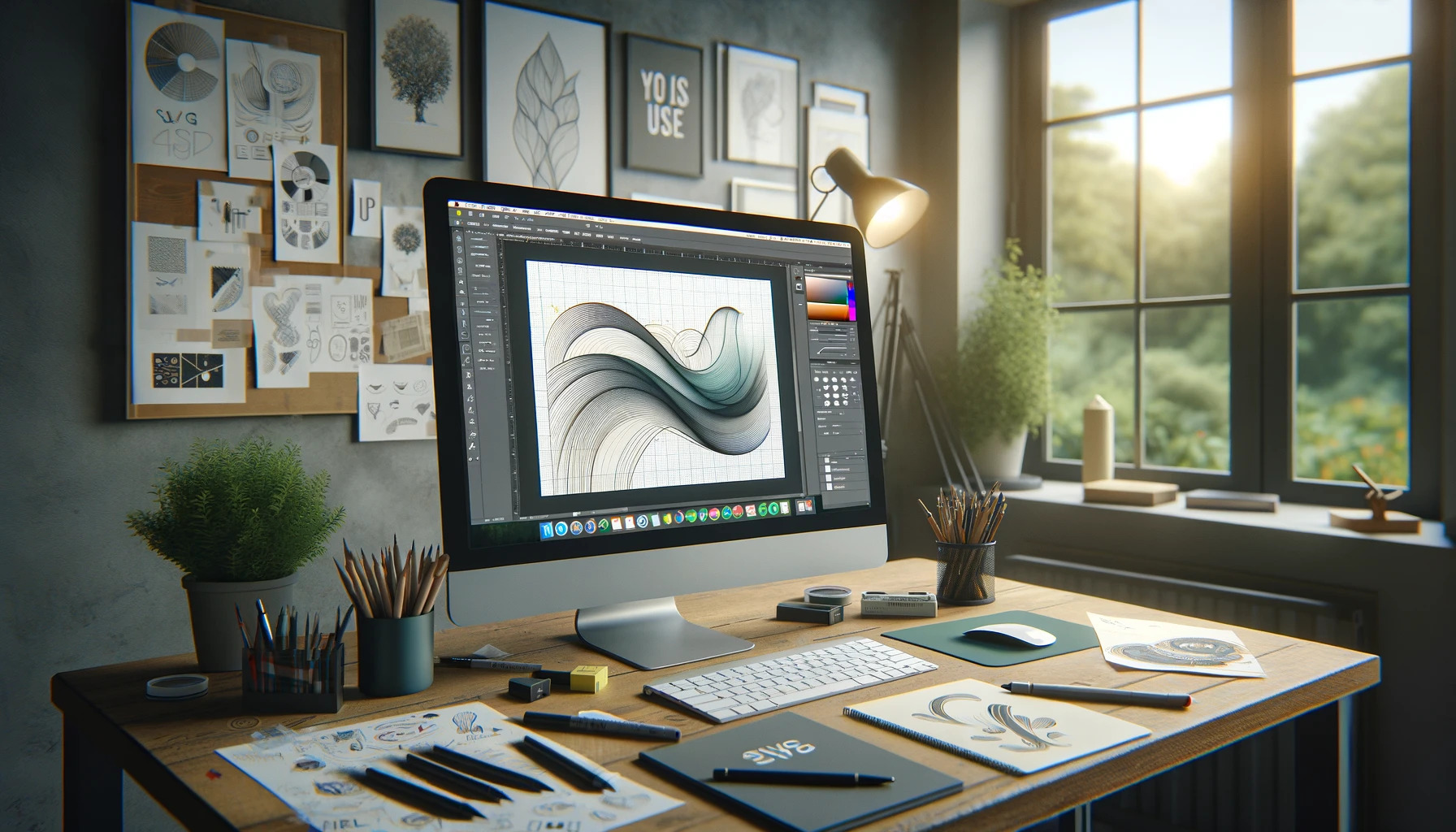How to Convert Images to SVG Format: A Step-by-Step Tutorial
By Stefan
Published March 26, 2024
 How to Convert Images to SVG Format: A Step-by-Step Tutorial
How to Convert Images to SVG Format: A Step-by-Step Tutorial
Converting images to SVG (Scalable Vector Graphics) format is an essential skill for web designers, developers, and graphic artists. This format ensures your images remain crisp and clear at any size, which is especially important in today’s multi-device world. Let’s dive straight into the process, breaking it down into manageable, actionable steps. By the end of this tutorial, you'll be able to transform any bitmap image into a scalable, editable SVG.
Preparing Your Image
Before we begin the conversion process, it's important to choose the right image. Simple logos, icons, and illustrations work best due to the vector nature of SVG. Complex photographs may not yield optimal results.
- Select an image: Opt for clear, high-contrast images.
- Clean up your image: Use an image editing tool to remove any unnecessary background and adjust the contrast.
Choosing the Right Tools
There are several tools available for converting images to SVG. Here’s a breakdown:
- Adobe Illustrator: A professional tool with a comprehensive set of features for vectorization.
- Inkscape: A free, open-source option that’s quite powerful.
- Online converters: Convenient for quick conversions without the need to download software.
Step-by-Step Conversion Using Adobe Illustrator
- Open your image: Go to
File > Place to insert your bitmap image into a new document. - Trace the image: Select your image and click on
Window > Image Trace. This opens the tracing panel. - Adjust settings: Choose a preset that best matches your image type. For logos,
Black and White Logo works well. Use the Threshold slider to adjust the level of detail. - Convert to vector: Click
Trace, then Expand to convert the image into a vector shape. - Edit if necessary: Use the
Direct Selection tool to make any adjustments to the vector paths. - Save as SVG: Go to
File > Save As, and choose SVG (*.svg) as the file format.
Conversion Using Inkscape
- Import your image: Open Inkscape, go to
File > Import, and select your image. - Trace Bitmap: Select your image, then go to
Path > Trace Bitmap. This opens the tracing options panel. - Choose tracing method: For most images,
Brightness cutoff is a good starting point. Adjust the threshold value to get the best result. - Apply and close: Click
OK to apply the trace. Close the Trace Bitmap window. - Delete the original image: Select and delete the original bitmap image, leaving only the vectorized version.
- Save as SVG: Go to
File > Save As, and select SVG as the format.
Using Online Converters
- Choose an online converter: Search for “image to SVG converter”. Websites like Vectorizer, Convertio, or CloudConvert are popular choices.
- Upload your image: Follow the website’s instructions to upload your bitmap image.
- Adjust settings if available: Some services offer basic settings such as color reduction or smoothing.
- Convert and download: Start the conversion process, then download your new SVG file once completed.
Post-Conversion Tips
After converting your image to SVG, there are a few steps you can take to ensure the best quality:
- Optimize your SVG: Tools like SVGO or SVGOMG can reduce file size without affecting quality. SVG file optimization ensures faster loading times and improved performance on the web.
- Manual tweaks: Open your SVG in a text editor or a vector graphics editor to make fine adjustments or reduce complexity. This process is essential to ensure that your SVG accurately represents the original image while also being optimized for its intended use, particularly SVG for web applications.
- Test across devices: Make sure your SVG looks good on different screens and resolutions.
Conclusion
Converting images to SVG format can seem daunting, but with the right tools and a step-by-step approach, it’s entirely achievable. Whether you choose a professional graphics editor like Adobe Illustrator, a free alternative like Inkscape, or an online converter, the key is to experiment with settings and tools until you find what works best for your specific image. This tutorial aimed to provide a foundation in those SVG basics, ensuring that with a bit of practice, the conversion process becomes a seamless part of your digital design endeavors. As you refine your technique, remember to optimize and test your SVGs across various devices to guarantee your graphics remain sharp and scalable, no matter where they're viewed.